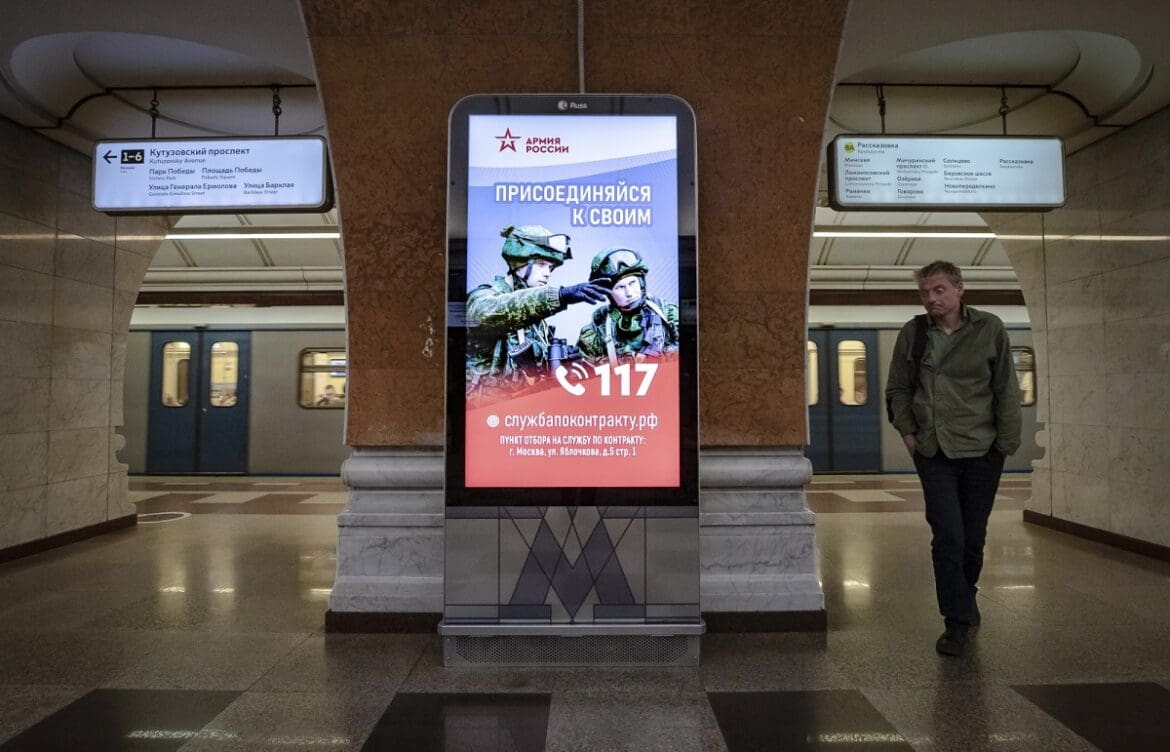Russia is facing a serious shortage of soldiers to fight the war in Ukraine, forcing the government to raise bonuses for recruits to avoid a repeat of the unpopular mobilization. However, these measures have not yet yielded the expected results – Bloomberg.
The military is not receiving enough recruits to compensate for heavy losses at the front, which are now the largest since the invasion began in February 2022, according to sources close to the Kremlin and the Russian Defense Ministry. On average, regional officials fulfill less than a third of their recruitment plans.
This may force Russia to consider a new mobilization. According to some sources, the new mobilization may be presented as a rotation for the frontline troops to rest, while others suggest that the draft may be announced as early as the end of this year.
A Ukrainian military breakthrough in the Kursk region of western Russia that met with little resistance underscores the Kremlin’s problems in the third year of the war. Ukrainian forces already control 1,000 square kilometers of Russian territory, and offensive operations are continuing, the Ukrainian army commander-in-chief told President Volodymyr Zelenskyy.
Russia has hundreds of thousands of troops on the front lines in eastern and southern Ukraine, where they are facing high casualties. The failure so far to repel Ukrainian attacks and regain control of the border has revealed a lack of defense reserves.
In September 2022, Russian President Putin announced the mobilization of 300,000 reservists, which caused widespread concern among Russians and a mass exodus from the country estimated at around one million people. To avoid a repeat of this scenario, the Kremlin has focused on patriotic appeals and monetary rewards to attract the 30,000 new soldiers per month needed to replenish the ranks.
This has pushed the Kremlin to significantly increase payments from federal and regional authorities to encourage recruitment. The pressure to meet quotas is so great that wealthy regions are forcing people from poorer areas to sign contracts to get higher bonuses.
According to knowledgeable sources, the scale of Russian losses and insufficient replenishment rates make it difficult to maintain the current strategy of slow advance in Ukraine. There is no longer any discussion of capturing Kyiv and other cities, as Russia does not have enough troops to do so.
To compensate for the slowdown in recruitment, the Russian authorities have significantly increased financial incentives. In July, Moscow Mayor Sergei Sobyanin promised to pay 1.9 million rubles ($22,000) to volunteers who sign military contracts, in addition to the 600,000 rubles already paid annually in monthly installments by the city government, along with salaries and bonuses from the Defense Ministry.
According to the mayor, new recruits can earn up to 5.2 million rubles in their first year of service if they survive, which is about three times the average annual salary in the capital last year.
St. Petersburg, Putin’s hometown and Russia’s second largest city, was also quick to join the initiative, offering recruits 1.6 million rubles.
Putin also issued a decree ordering the government to double the federal bonus for new recruits to 400,000 rubles by the end of the year and urged regional authorities to make similar payments. The average monthly salary in Russia in May was just under 86,500 rubles.
However, some regions are applying for subsidies from the government to meet Putin’s demands, as they are unable to raise the necessary funds on their own, said an official familiar with the situation.
The Russian army’s growing need for new soldiers has already sparked increased competition for labor from businesses, as the problem of staff shortages becomes more difficult to solve in Russia’s overheated economy. The pressure is growing due to the increased bonuses the government is trying to offer to attract more men to the army.
President Putin needs about 500,000 new soldiers over the next 12 months to compensate for losses and rotate troops deployed in Ukraine, Bloomberg Economics Russia economist Alex Isakov said. The current recruitment strategy, which is based on paying above-market rates to volunteers, will not be sufficient to achieve this goal. Instead, the government is likely to focus on conscripts.
The Kremlin does not disclose the exact number of Russian soldiers killed or wounded. According to Western estimates, Russia’s total losses could reach 500,000 people. The British Ministry of Defense reported on August 3 that the last three months have been the most costly for Russia in terms of casualties since the beginning of the war, reaching an average of 1,262 people per day in May.
The average daily casualty rate is likely to remain above 1,000 people through August as Russia continues its offensive on a broad front in Ukraine.
russia plans to expand its armed forces to 1.5 million troops from the current 1.15 million. In December, then-Defense Minister Shoigu said that 650,000 troops had combat experience in Ukraine.
In January, Ukrainian President Volodymyr Zelenskyy said that the number of Ukrainian troops was just under 900,000. To address mobilization problems, Ukraine passed a new law in May that lowered the conscription age from 27 to 25 and narrowed the range of exemptions from service. This happened against the backdrop of tens of billions of dollars in new military aid from the United States and European allies.
In a July interview with Bloomberg News, Zelenskiy said that Ukrainian forces are now better prepared in terms of human resources than they were a few months ago. Preparing for a new counteroffensive against Russia depends on providing the brigades with the necessary weapons.




